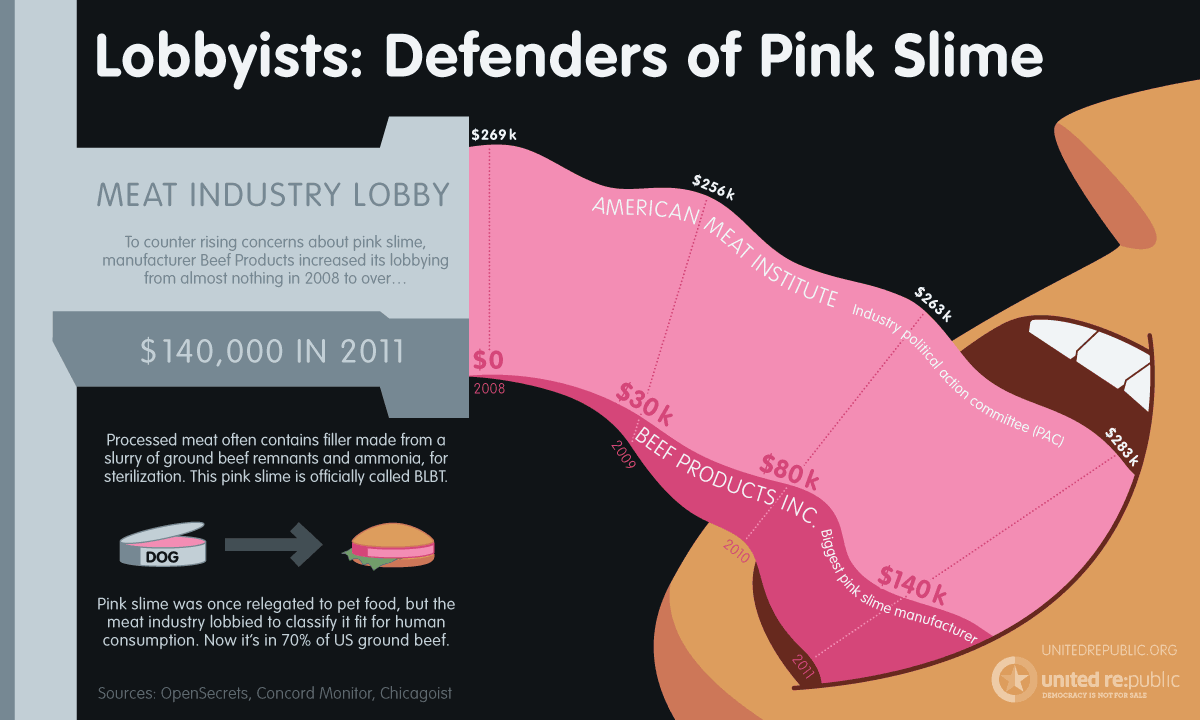Seriously, there is so much going on this past week. I attended the
Farmer2Farmer conference at the
Saanich fairgrounds, which was a great day, which I really want to talk at length about, and which left me with some hope. But that will have to wait for another post.
Pink slime--mechanically seperated lean beef that 's been treated with ammonia--is still around.
Reuters is carrying a
special report (.pdf) on Beef Product Inc.'s lawsuit against ABC, Diane Sawyer and others on their reporting of the use of "lean finely textured beef" in ground beef products like hamburgers. The suit has all the earmarks of a SLAPP (Strategic Lawsuit Against Public Participation) suit, particularly with the potential damages heading north of a billion dollars.
The lawsuit, originally filed in South Dakota state court, is hinged
partly on a state product-disparagement statute designed to protect
farming interests. Twelve other states have similar laws - dubbed
"veggie libel" measures by critics - but they have rarely been invoked.
Under
the South Dakota version of the law, plaintiffs must show that
defendants publicly spread information they knew to be false and stated
or implied "that an agricultural food product is not safe for
consumption by the public."
If BPI were to win on
that claim, under the law it could be awarded triple the damages that
were caused. That means that the company's claim of more than $400
million in projected lost profits could balloon to damages of more than
$1.2 billion.
But you can see why they feel they have to silence criticism--BPI has gone from 4 plants and about $650 milliion (US) in revenue to 1 plant and about $130 million (US) in revenue. And, as usual, buy direct from a farmer--make sure they get whatever profit's to be made and have the security of knowing where your food comes from.
NewsRx Science is reporting on the potential for urban agriculture in one of the US' most depressed cities: Detroit.
Transforming
vacant urban lots into farms and community gardens could provide Detroit
residents with a majority of their fruits and vegetables.
As city officials ponder proposals for urban farms, a
Michigan State University
study indicates that a combination of urban farms, community gardens,
storage facilities and hoop houses - greenhouses used to extend the
growing season - could supply local residents with more than 75 percent
of their vegetables and more than 40 percent of their fruits.
The study, which appears in the current issue of The Journal of
Agriculture, Food Systems, and Community Development, evaluates many
aspects of the production potential of the Motor City's vacant
properties, from identifying available parcels of land to addressing
residents' attitudes toward blending agrarian traits with their urban
lifestyles.
"What's clear from our production
analysis is that even with a limited growing season, significant
quantities of fresh fruits and vegetables eaten by Detroiters could be
grown locally," said Kathryn Colasanti, the graduate student who led the
study for the C.S. Mott Group for Sustainable Food Systems at MSU. "And
investments in produce storage facilities and hoop houses would
increase this capacity substantially."
Now we just need some political will. CBC is reporting that Sudbury's city planning staff is getting onboard, but the councilors are dragging their heels.
It is just an idea at this point — and something many other cities are
considering — but city Coun. André Rivest said right now his vote would
be a no.
"You got houses that are worth a lot of dollars and you want to keep that,” he said.
“You start having chickens in backyards ... I sense that wouldn't be well received."
But city planner Kris Longston said Sudbury's long-range plans should focus more on urban agriculture.
You can listen to the
report here.
And that's the problem, innit? Political will.In a city you have to be willing to stare down local developers--who carry a lot of political and financial weight. And the ability to scare the public with the thought that the value of our homes may decrease. Canadians have become utterly reliant on their homes as their savings accounts--and on increasing home prices fueling consumer purchases--so any threat to house prices threatens the entire myth that we currently function under. The question of just who is expected to pay inflated prices for houses when all the boomers decide to retire isn't one that gets asked--because there is no real good answer. Wealth inequity is becoming more and more pronounced in Canada, and the middle class is starting to lose people off the bottom. The Fear, as Hunter Thompson used to describe it, is starting to set in.




